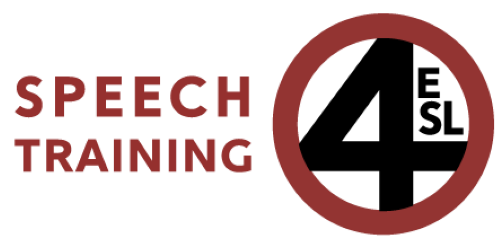Tip #4: Make good use of body language, both in what you see and what you do.
Why is this important?
It has been said that well over 50% of our message is conveyed nonverbally. That means without words. One of the primary modes of nonverbal communication is through our body language.
You’ve probably heard the term body language and weren’t sure what that meant. It’s your posture; it’s your gestures; it’s your facial expressions. All of these things convey meaning to our listener, and they can add or detract from the words we say. For instance, if one is saying something important, and the listener is standing with his arms crossed, what is the message being conveyed? The listener does not seem to be receptive. He doesn’t like what he is hearing.
Consider these things
Consider posture. If two people are standing in close proximity to each other, engaging in a conversation, and one’s body is slightly turned from the other, what is she saying? Does she look like she wants to be there or is she trying to get away? On the contrary, if two people are engaged in a conversation, standing with bodies facing each other and eye contact being held, the message is completely different. In this case, it is a positive interaction with both parties interested in what the other has to say.
Match it
Another thing to consider is matching our body language to our words so that we don’t give a mixed message. If our words are positive, we want our body to convey that. Posture turned towards the listeners, arms open, eye contact being made, even with a smile thrown in, all indicate this is a positive exchange.
If our words are assertive or are constructive criticism, we might take a slightly different posture, with our hands folded and our bodies leaning in to the listener to make a statement that we are the ones in authority in this exchange, that we have something slightly difficult to say but with the desire for it to be heard. If we really want to be argumentative, we might throw in some gestures, like finger pointing at certain points in our message in an attempt to persuade our listener to our point of view.
Cultural Cues
Granted these are just examples of how body language might be used or observed in daily interactions. There is no right way, but there are cultural cues you can pick up on. Shifting eye contact indicates dishonesty where steady eye contact establishes trust. Folded arms indicate a closed mind, where unfolded arms and body facing the listener indicate openness to ones’ message. Gestures can be used to enhance a message or to push a point. Facial expressions can be used to enhance the ideas, like smiling for humor or frowning when confused.
Observe body language around you and take note. See if you can tell whether the message and the body language match. Try to be aware of yourself and how you use your body language when you communicate. And don’t forget its importance to the message you are trying to convey.
Tip #4: Make good use of body language, both in what you see and what you do.
Why is this important?
It has been said that well over 50% of our message is conveyed nonverbally. That means without words. One of the primary modes of nonverbal communication is through our body language.
You’ve probably heard the term body language and weren’t sure what that meant. It’s your posture; it’s your gestures; it’s your facial expressions. All of these things convey meaning to our listener, and they can add or detract from the words we say. For instance, if one is saying something important, and the listener is standing with his arms crossed, what is the message being conveyed? The listener does not seem to be receptive. He doesn’t like what he is hearing.
Consider these things
Consider posture. If two people are standing in close proximity to each other, engaging in a conversation, and one’s body is slightly turned from the other, what is she saying? Does she look like she wants to be there or is she trying to get away? On the contrary, if two people are engaged in a conversation, standing with bodies facing each other and eye contact being held, the message is completely different. In this case, it is a positive interaction with both parties interested in what the other has to say.
Match it
Another thing to consider is matching our body language to our words so that we don’t give a mixed message. If our words are positive, we want our body to convey that. Posture turned towards the listeners, arms open, eye contact being made, even with a smile thrown in, all indicate this is a positive exchange.
If our words are assertive or are constructive criticism, we might take a slightly different posture, with our hands folded and our bodies leaning in to the listener to make a statement that we are the ones in authority in this exchange, that we have something slightly difficult to say but with the desire for it to be heard. If we really want to be argumentative, we might throw in some gestures, like finger pointing at certain points in our message in an attempt to persuade our listener to our point of view.
Cultural Cues
Granted these are just examples of how body language might be used or observed in daily interactions. There is no right way, but there are cultural cues you can pick up on. Shifting eye contact indicates dishonesty where steady eye contact establishes trust. Folded arms indicate a closed mind, where unfolded arms and body facing the listener indicate openness to ones’ message. Gestures can be used to enhance a message or to push a point. Facial expressions can be used to enhance the ideas, like smiling for humor or frowning when confused.
